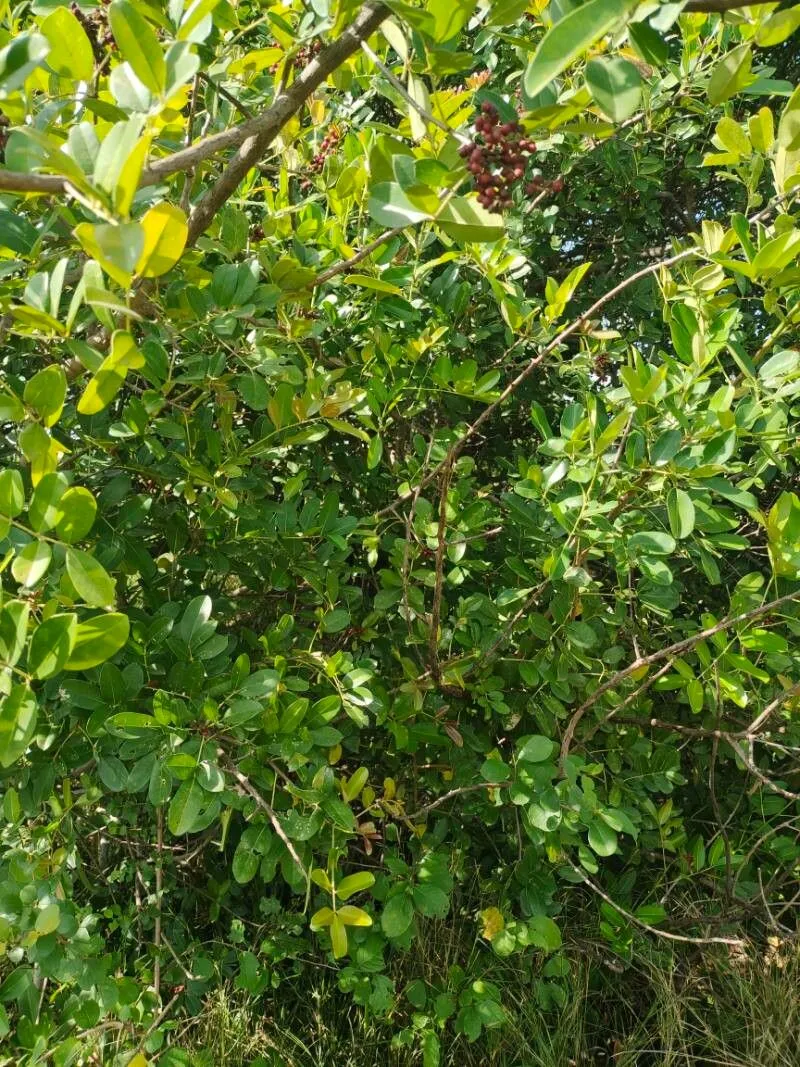
Author: B.Zepernick & Timler (Lam.)
Bibliography: Willdenowia 11(2):361. 1981
Year: 1981
Status: accepted
Rank: species
Genus: Zanthoxylum
Vegetable: False
Observations: W. Trop. Africa
Senegal prickly-ash, scientifically known as Zanthoxylum zanthoxyloides, is a fascinating plant species belonging to the Rutaceae family. Native to the regions of Western Tropical Africa, this plant has been the subject of various botanical studies and discussions due to its unique characteristics and diverse applications.
The genus Zanthoxylum, to which the Senegal prickly-ash belongs, is known for its numerous species of trees and shrubs that are often characterized by thorny structures and aromatic properties. This particular species, Zanthoxylum zanthoxyloides, is notable for its resilience and adaptability to the tropical climates of West Africa.
One of the distinctive features of the Senegal prickly-ash is its prickly stems and branches, which serve as a natural defense mechanism against herbivores. The leaves are typically compound and glossy, contributing to the plant’s overall aesthetic appeal. When bruised or crushed, the foliage can release a characteristic citrusy fragrance, a trait that underscores its membership in the Rutaceae family.
In addition to its distinctive morphology, Zanthoxylum zanthoxyloides has garnered attention for its traditional medicinal uses. The bark, roots, and leaves of the plant have been utilized in various forms of traditional African medicine. Local communities have harvested these parts to prepare remedies aimed at treating an array of conditions, ranging from digestive disorders to fever and toothaches. Its potent bioactive compounds are attributed to the therapeutic effects that have been documented over generations.
The Senegal prickly-ash has also found its place in ethnobotanical research, as modern science continues to explore the pharmacological potential of its constituents. Studies have delved into the plant’s antibacterial, antifungal, and anti-inflammatory properties, seeking to validate traditional uses and potentially discover novel applications in contemporary medicine.
The ecological role of Zanthoxylum zanthoxyloides in its native habitat cannot be overstated. It often thrives in diverse environmental conditions, from dry savannahs to moist forested areas, providing habitat and sustenance for various wildlife species. The plant’s ability to thrive in less fertile soils also marks it as an important species for ecological conservation efforts, contributing to soil stabilization and ecosystem resilience.
The botanical description and historical significance of Zanthoxylum zanthoxyloides were prominently featured in the 1981 publication of Willdenowia. Authored by B. Zepernick and Timler, this detailed account underscores the importance of documenting and understanding the diverse flora of Western Tropical Africa.
In summary, the Senegal prickly-ash (Zanthoxylum zanthoxyloides) is a remarkable plant that embodies both ecological significance and cultural heritage. Its unique botanical features, traditional medicinal uses, and potential for future scientific discoveries highlight its continued importance in the study of tropical plant species.
Eng: senegal prickly-ash
En: Senegal prickly-ash
Taken Feb 1, 1988 by Daniel Barthelemy (cc-by-nc)
Taken Jan 15, 2022 by Maarten Vanhove (cc-by-sa)
Taken Nov 30, 2019 by Tela Botanica − Sylvain Piry (cc-by-sa)
Taken Nov 30, 2019 by Tela Botanica − Sylvain Piry (cc-by-sa)
Taken Feb 1, 1988 by Daniel Barthelemy (cc-by-nc)
Taken Apr 15, 2019 by friday peter (cc-by-sa)
Taken Nov 5, 2022 by Josefa Da Silva Oliveira (cc-by-sa)
Taken Jul 17, 2022 by Mariama Ndiaye (cc-by-sa)
Taken Oct 12, 2022 by Kwesi Prah (cc-by-sa)
Taken Nov 16, 2016 by Tela Botanica − Jennifer CARRÉ (cc-by-sa)
Taken Nov 17, 2022 by Tharunoju Laxman kumar (cc-by-sa)
Taken Nov 17, 2022 by Tharunoju Laxman kumar (cc-by-sa)
Taken Nov 17, 2022 by Tharunoju Laxman kumar (cc-by-sa)
Taken Nov 30, 2019 by Tela Botanica − Sylvain Piry (cc-by-sa)
Taken Nov 30, 2019 by Tela Botanica − Sylvain Piry (cc-by-sa)
Family: Myrtaceae Author: (F.Muell.) K.D.Hill & L.A.S.Johnson Bibliography: Telopea 6: 402 (1995) Year: 1995 Status:…
Family: Rubiaceae Author: Pierre ex A.Froehner Bibliography: Notizbl. Bot. Gart. Berlin-Dahlem 1: 237 (1897) Year:…
Family: Sapindaceae Author: Koidz. Bibliography: J. Coll. Sci. Imp. Univ. Tokyo 32(1): 38 (1911) Year:…
Family: Asteraceae Author: A.Gray Bibliography: Pacif. Railr. Rep.: 107 (1857) Year: 1857 Status: accepted Rank:…
Family: Fabaceae Author: Medik. Bibliography: Vorles. Churpfälz. Phys.-Ökon. Ges. 2: 398 (1787) Year: 1787 Status:…
Family: Aspleniaceae Author: (Cav.) Alston Bibliography: Bull. Misc. Inform. Kew 1932: 309 (1932) Year: 1932…